IDLE SHAKE NEW PROM PART NUMBER

MODELS/YEARS 1982 1/2-83 OMEGAS WITH 2.5L ENGINE (VIN CODE R) EQUIPPED WITH 2 BOARD ECM - PART NO. 1226100
You may experience a condition of idle shake on subject vehicles. Several contributors or a combination of possible contributors listed in this bulletin may cause this condition.
Items to be checked prior to the installation of the PROM listed in this bulletin should be inspected and repaired as required prior to release of the vehicle to the customer.
1. Power steering hoses contacting the A/C accumulator have a significant effect on instrument panel vibration at idle, as well as heater hoses and clamps contacting the heater module, or any other lines touching the cowl when in drive. Ensure that all hoses and lines are pulled away from the accumulator and front of cowl so that no contact occurs.
2. Engine cradle alignment will influence idle quality. The cradle should be properly aligned using the following procedure:
a. Support vehicle on a suitable lift or stands at the four (4) lift points as indicated in Section OB of the Chassis Service Manual.
b. Loosen all four (4) cradle-to-body attaching mounts.
c. Align cradle to body by inserting two (2) pins 16 mm (5/8") dia. by 8" long in alignment holes on right side of cradle (Figure 6). Tighten body mounts to torque specified in Figure 5. Alignment pins must not be removed until all body mount bolts are tightened to specified torque.
NOTE: Torque sequence of cradle mounts is 4 - 3 - 2 -1 as shown in Figure 5.
d. Loosen the upper engine to radiator torque strut support bolt, radiator side (hole is slotted) with parking brake applied and front wheels blocked. Put transmission selector in drive at idle and tighten strut bolt to 48 N.m (35 1 bs. ft.).
3. Excess rubber in either or both of the transmission mount interlock windows will influence idle vibration. See Figure 3. This rubber, if present, should be cut away with the mounts on the vehicle. New torque strut part no. 14077715 and engine mount part no. 14073097 have been released which give more compliance to engine pitch, reducing shake load into the vehicle. Refer to October 1983 Service Guild, page 1.
4. Check for an unrelaxed rubber exhaust hanger rearward of the catalytic converter. See Figure 4. The unrelaxed hanger will transmit vibration through the floor pan and body structure. If this condition exists, loosen the exhaust joint ball flange, reposition the catalytic converter upwards to unload the hanger and retighten the exhaust system flange bolts to 20-24 N.m (15-17 lbs. ft.). An unrelaxed rubber hanger at the rear of the converter may also transmit exhaust moan noise into the car. It may be necessary to pry the hanger bracket downward slightly to relax the rubber hanger.
NOTE: This exhaust moan condition and correction also applies to 1982 through 1984 Cutlass Cieras with 2.5L engines.
Visual checks for the exhaust system contacting the body should also be made.
5. Loose, improperly installed, or missing instrument panel fasteners will also contribute to idle vibration. Refer to Dealer Technical Bulletin 83-T-11.
A recalibrated PROM has been released for service which raises the idle speed to 800 rpm for idle shake improvement. The recalibrated PROM also raises TCC engagement speed. This should be installed only after all other above items have been checked and corrected. To determine which PROM applies to the vehicle being serviced, determine the correct axle ratio by referring to the transmission code identification plate as illustrated in Figures 1 and 2. This new PROM is to be used only on vehicles equipped with two (2) board ECM's (part no. 1226100), per the following chart:
ECM PROM Broadcast Transmission Axle Usage Number PROM Code Code Ratio ----- ------ ---- ---- ---- ----- 1982 1/2-83 1226100 1226828 CDL PW 2:39 2.5L w/Auto Trans. (National) 1982 1/2 -83 1226100 1226827 CCY PD 2:84 2.5L w/Auto Trans. (National)
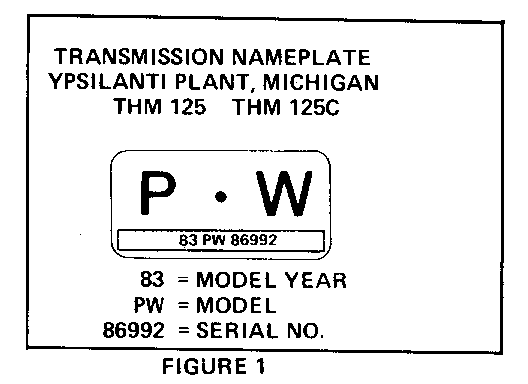
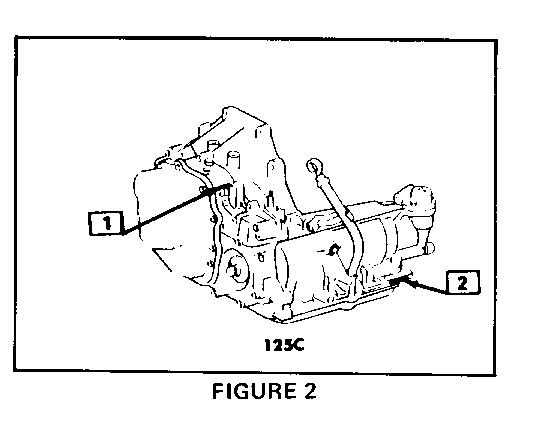
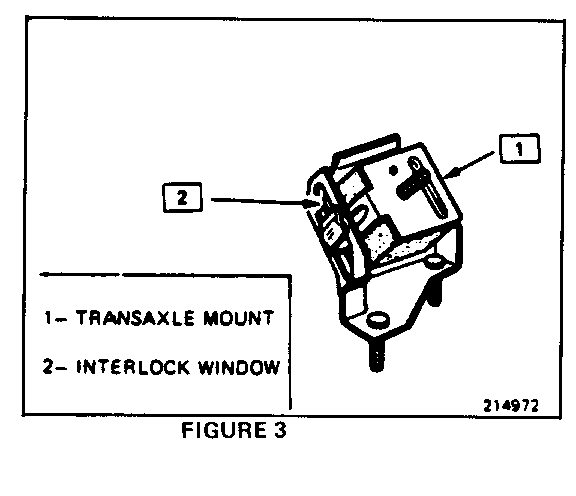
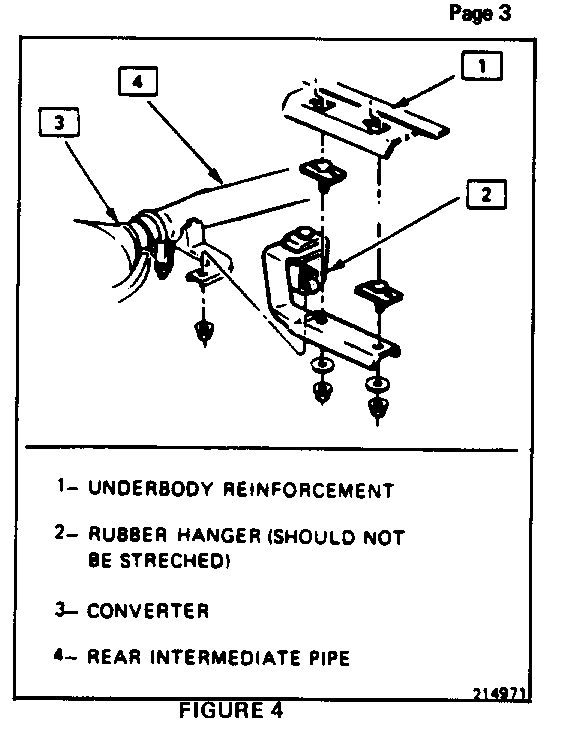
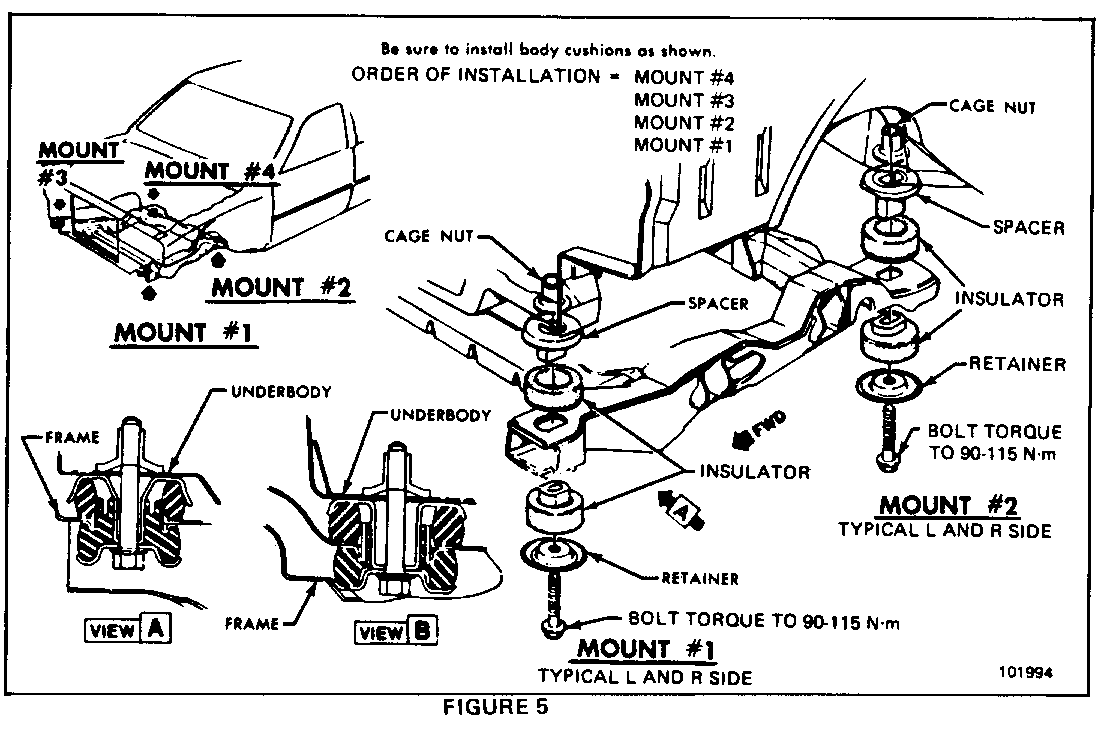
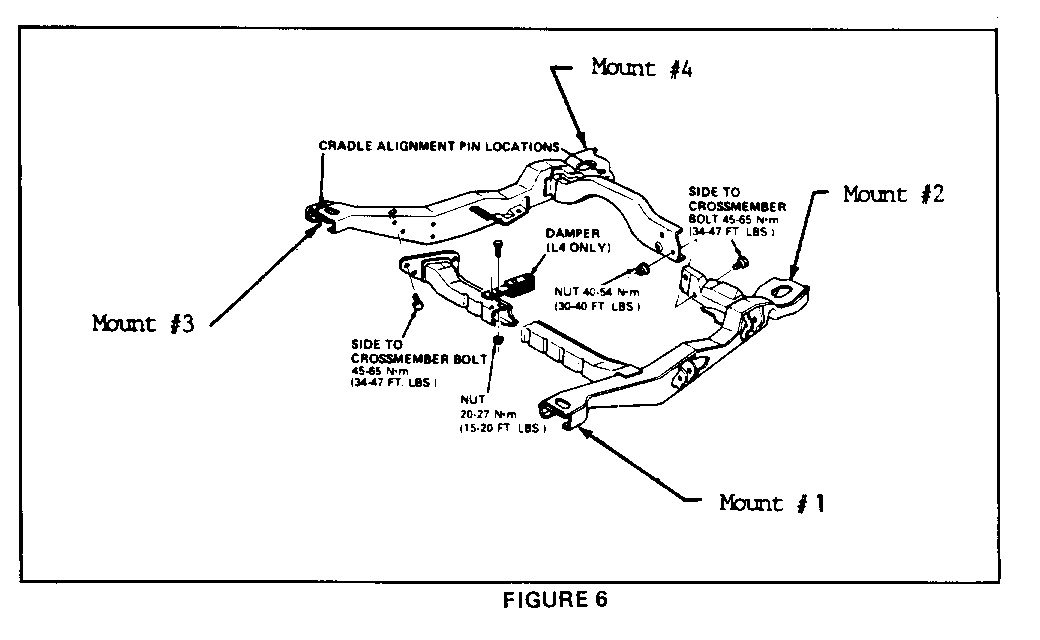
General Motors bulletins are intended for use by professional technicians, not a "do-it-yourselfer". They are written to inform those technicians of conditions that may occur on some vehicles, or to provide information that could assist in the proper service of a vehicle. Properly trained technicians have the equipment, tools, safety instructions and know-how to do a job properly and safely. If a condition is described, do not assume that the bulletin applies to your vehicle, or that your vehicle will have that condition. See a General Motors dealer servicing your brand of General Motors vehicle for information on whether your vehicle may benefit from the information.
